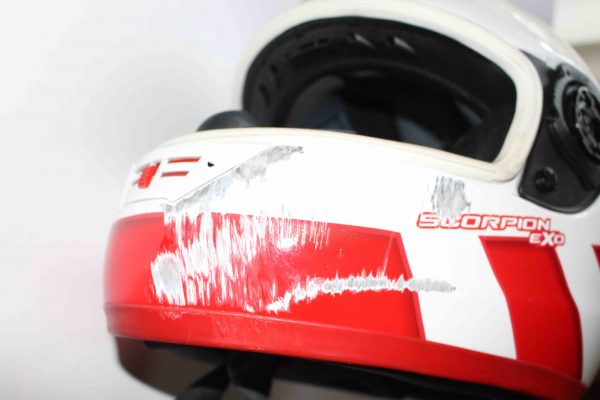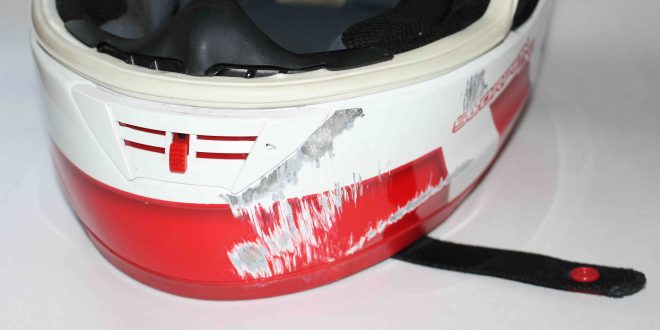By Steve Smith /
NAUGATUCK, CT – It happened during a Basic Rider Course that I was teaching maybe 20 years ago and involved a student who was opposed to wearing a helmet when riding.
‘The class was engaged in a riding exercise when the student approached the stopping area and apparently grabbed a handful of front brake. This caused the wheel to skid and he took a minor spill at a slow speed. The bike was righted, he remounted, and continued the exercise.
Hey, stuff happens, but what made this spill stand out was what had preceded it.
Student Vows Not To Wear Helmet
The student had arrived that morning with a new and expensive motorcycle manufacturer-branded, DOT-approved half-helmet. I remember this because as he showed it off and professed to classmates that his friends did not wear helmets while riding and that he planned to do the same.
The student said he’d only bought the lid to satisfy the helmet requirement for the course. When asked what he thought about the classroom discussion regarding head and brain injury, his response was that he would just hold his head up in the event of a crash. He proceeded to tuck his chin to his chest to demonstrate.
It was later the same day during a maximum braking exercise that the guy went down. I was with a group of six other riders on the other side of the range when it happened, so it wasn’t until break time that I could talk with him. I walked over to where this guy and several other students were having a discussion and looking at the significant scrapes and gouges on the side of the helmet where it impacted the ground.
Changes Mind After Going Down
After listening a bit, I asked him, “What happened to holding up your head?” He smiled at me and replied, “I may have to rethink using a helmet!”
Regardless of the reason for a crash, it’s most often the rider who ends up holding the short end of the stick. It’s no surprise that head and brain injuries are common and the leading cause of crash-related fatalities. This is why riders and passengers are encouraged to wear a quality helmet.
Not only is a helmet of paramount importance to reduce risks of crash-related injury, wearing one has saved me from less perilous situations. For example, one time a rock was thrown up by a vehicle ahead of me. It struck my helmet just above the face shield. Another time a kamikaze bird collided with the side of the helmet. Both situations may have abruptly ended my riding day had I not donned a lid.

Yes, helmet use is a polarizing topic with riders. It’s not often I see a student change their perspective on helmet use like I did during that class so many years ago – and hardly ever outside of class.
It’s my hope that other students in the class changed their perspective that day, too, after the unplanned “demonstration.” And maybe this short tale will have a similar impact.
 Ride CT & Ride New England Serving New England, NYC and The Hudson Valley!
Ride CT & Ride New England Serving New England, NYC and The Hudson Valley!


